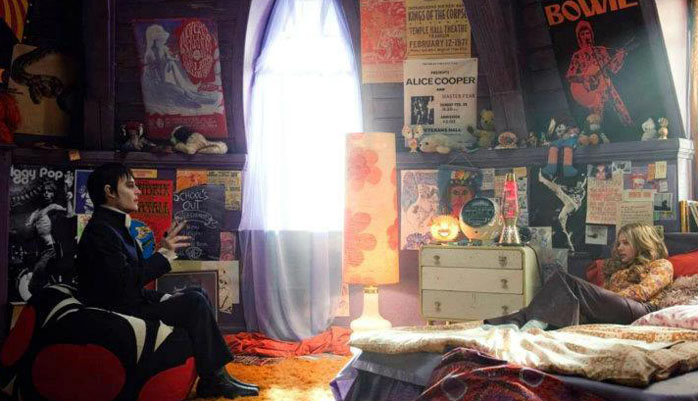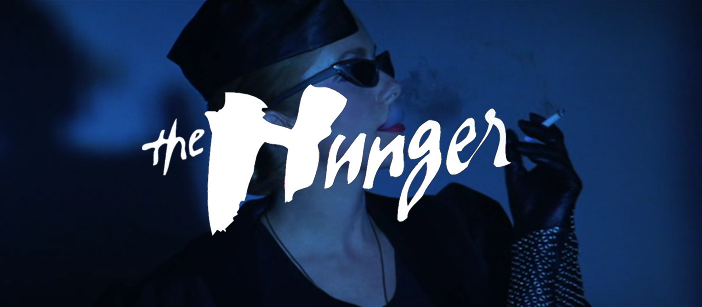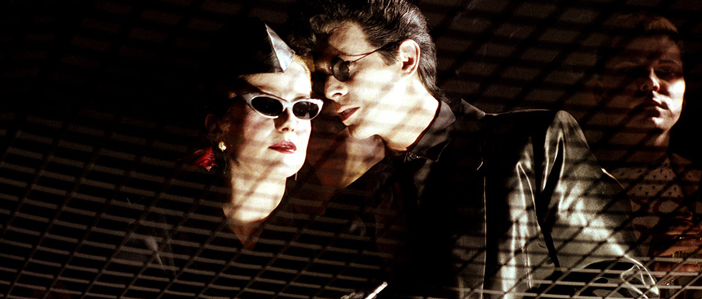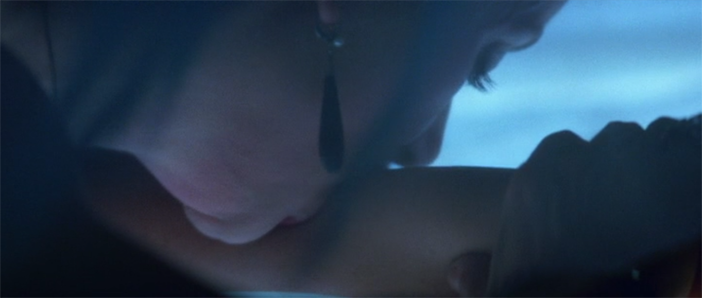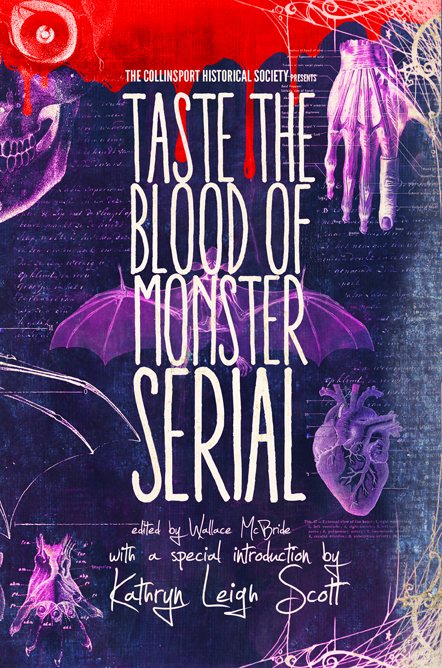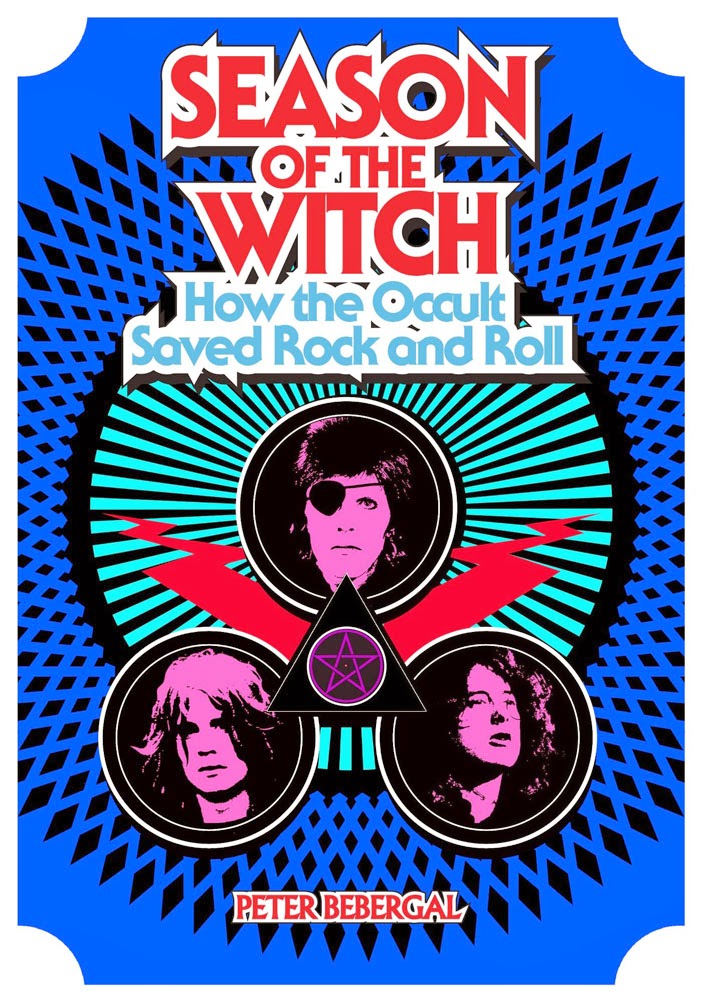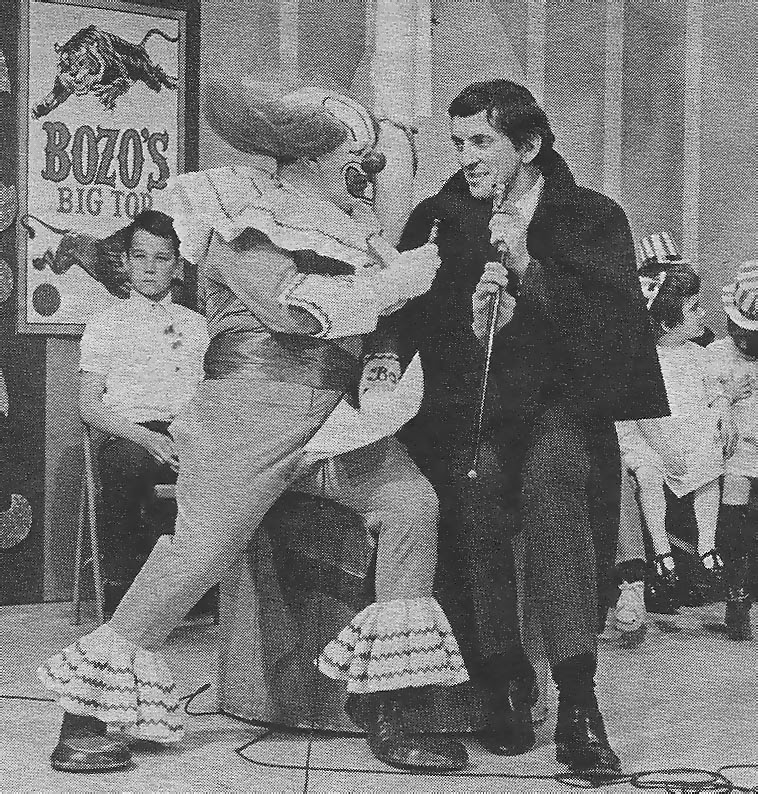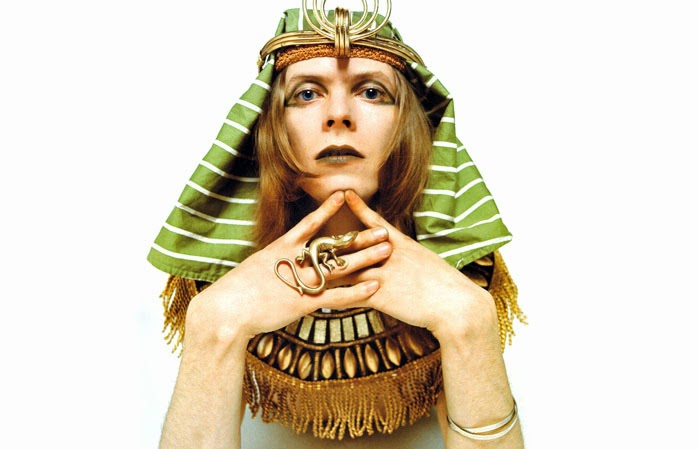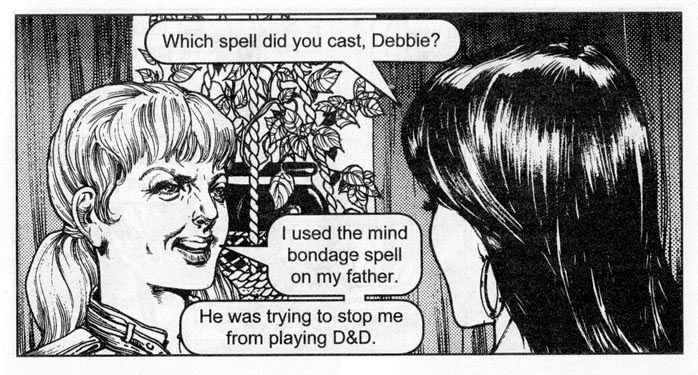By PATRICK McCRAY
When you mention David Bowie to me, I’m like any other man, really. The first thing that occurs to me is “tasteful restraint.”
No, really. I’m not making the ha-ha, either.
I have an amazing blind spot for music written after 1945 or so. I just call it all “rock.” This drives music fans crazy, but it’s always been (mostly) incomprehensible noise to me, and I’m forever grateful to Todd Loren for allowing me to write a treatise on the subject in
ELVIS SHRUGGED.
Music fans are usually split into three groups when I chat about this. One third? Driven into a gibbering rage, as if I’d wrapped a fetus in the flag and then burned it on a stack of Bibles. The second? They wave it all away with, “You don’t know what you’re talking about.” The third? They just feel a strange pity.
Yeah, I’m missing out. Yeah, I don’t know what I’m talking about. Yeah, yeah, yeah.
But I have one great advantage: when musicians make the transition to film, I carry no baggage. (Or I’m relieved that I can finally understand what they’re saying.) Sting? He’ll always be Feyd. Ringo? There will never be a finer caveman. KISS? Will the mad Dr. Abner Devereaux ever face more cunning opponents? And several years after he fell to Earth — but before he melded with Tammy Faye Baker to become the Goblin King — David Bowie was the Saddest Vampire in Town.
In 1983’s
THE HUNGER, Bowie plays vampire, John Blalock, the companion to a much, um, Queenier vampire, Miriam (Catherine Deneuve). I mean “Queen,” literally. She’s an alpha, giving immortality to her chosen lover/companions. Unfortunately, “immortal” and “ageless” are not synonymous in
THE HUNGER. John’s been around for a few centuries, but when he begins to age, the effect is voraciously rapid. In a stark counterpoint to the pristine and sunlit (!) New York luxury in which they live, Bowie becomes an elderly mess in a matter of days, dwindling away so far that his hunting (done by both vampires with bladed ankhs rather than fangs) is reduced to victimizing those equally helpless.
One surprise is that Bowie is in very little of the film. That’s always a surprise, considering how much he was highlighted in the advertising. The film pretty much starts moving when he discovers that the decades are catching up with him, and the storytelling moves deceptively briskly for a film that seems so stately. Once his character reaches total enfeeblement, Miriam simply carts him upstairs and crates him away with an impressive collection of former lovers that stretches back thousands of years. All are doomed to live, yet are too weak to feed or move… unless they are really, really, really motivated. Which happens.
Before that: lesbians!
Okay, stand down. Yellow alert. No need to go to battle stations. Don’t text the SJW’s of Tumblr on my tail quite yet. I’ll be no more sensationalistic than was the film in 1983.
Back then, on-screen lesbians were few and far between. They were rough and ready punchlines and never eroticized (to my recollection). But gentle, elegant, feminine, lesbians having slow lesbianesque lesbianism with lots of white, billowy curtains and soft, haunting music caressing the ears?
Nope. Hadn’t had that.
My mom was always up for a good vampire movie, and I talked her into this one with promises of the classy cast and copious opera music. But between the agreement to see the film and the actual viewing was a period of intense suspense. If she got wind of the, ahem, other stuff, it would have been a massacre. Dammit if I didn’t pull off the scheme. After all, Catherine Deneuve was classy, right? French. See? It’s art right there. And Tony Scott (a vastly underrated director who had the tragic habit of usually picking terrible material) handled it with such classy finesse that it all qualified as not just art, but High Art. Maybe too High? It was so classy, in fact, that the film can only be seen as erotic by people so pretentious that sex is totally wasted on them.
Thank goodness that Dan Hedaya is in the film. The movie is so beautiful that Dan’s heavy mug is a welcomed reminder that real people exist in this world, too. He plays the equivalent of THE EXORCIST’s Kinderman in the movie, and seeing him made me miss the days when it was okay to be frumpy.
Okay, the story. I guess now that David Bowie and the Great Lesbian Caper of 1983 are out of the way, I guess I should address the rest of the story. Back before he got abducted, went crazy, and became the first spokesman for the Aneros, Whitley Strieber was a heckuva writer. THE HUNGER comes from his imagination, and the resulting film really saves vampirism from its own cliches. It’s much the way that he modernized the werewolf with the nearly forgotten gem, WOLFEN.
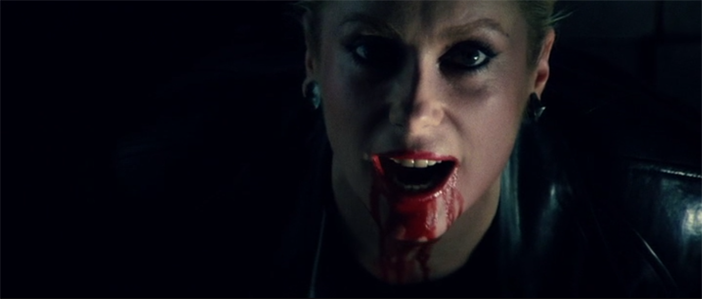
What are these vampires? Well, before the sequel books in which Strieber revealed them to be (sigh) aliens, they are “simply” blood-drinking immortals. No fangs. No bats. No sleeping in coffins (until you’re too old to sleep in anything else). With John out of the story, Miriam wastes no time in finding a replacement in gerontologist, Dr. Sarah Roberts (Susan Sarandon). Sarah is obsessed with the concepts of aging and immortality, and she became familiar with the Blaylocks when John sought her help — to no avail. Clouding the bliss is Sarah’s boyfriend, Tom. I primarily mention him because he was played by Cliff De Young, who played the twin brothers Brad Majors and Farley Flavors in ROCKY HORROR’s savvy sequel,
SHOCK TREATMENT. Seeing him alongside Susan Sarandon, the original Janet Weiss, makes it feel like it should be called
CRISIS IN INFINITE DENTONS.
Oh, yeah, she kills him and drinks his blood, too.
As the film ends, Sarah’s conscience defeats Miriam’s wiles. Using Miriam’s own blade, Sarah stabs herself and forces Miriam to drink her blood. Somehow, this sacrifice/poisoning awakens her ex-lovers, who attack Miriam. Sarah has inherited the mantle of Queen as the film ends.
How? I don’t know. How do these creatures live forever? What am I, Kreskin? The ending — like the rest of the film — is so gorgeous (while never ponderous) that it works despite the ambiguities.
It had been a long, long time since I’d seen THE HUNGER. I was afraid that it would be pretentious, overblown, and obsessed with its own beauty. Hardly, although it’s about the tragedy of people who are pretentious, overblown, and obsessed with their own beauty. As a vehicle for that story, it is like Bowie, himself. The cinematic Bowie, anyway. It’s intelligent, nimble, dignified, and well aware of the easy traps of vanity.
For a lot of the music fans I know, David Bowie’s movie appearances get treated like some sort of weird, in-the-know punchlines. For me? He’s simply one of my favorite actors. I’d like to keep it that way. And for the part of him that is a serious actor, I suspect that he would, as well.
PATRICK McCRAY is a well known comic book author who resides in
Knoxville, Tenn., where he's been a drama coach and general nuisance
since 1997. He has a MFA in Directing and worked at Revolutionary Comics
and on the early days of BABYLON 5, and is a frequent contributor to
The Collinsport Historical Society. You can find him at The Collins Foundation.
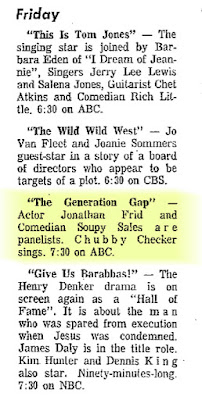 In 2012, prompted by god only knows what, musician Jenna Vix released a song titled "In the House of Dark Shadows," featuring lyrics composed mostly of the great/goofy taglines used for 1970's HOUSE OF DARK SHADOWS. "Come see how the vampires do it" is actually a lyric in this song.
In 2012, prompted by god only knows what, musician Jenna Vix released a song titled "In the House of Dark Shadows," featuring lyrics composed mostly of the great/goofy taglines used for 1970's HOUSE OF DARK SHADOWS. "Come see how the vampires do it" is actually a lyric in this song.
